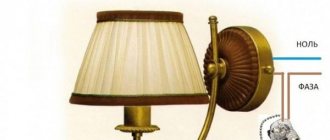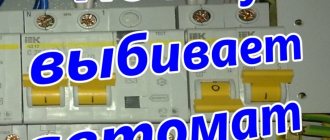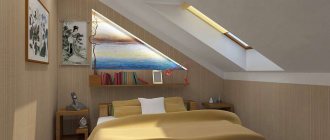06/30/2016 master
Today you can create high-quality lighting in any room using a wide variety of lighting devices. Their assortment is so large that many are slightly confused by such diversity. Recently, in the world, an increasing emphasis in matters of indoor lighting has been placed on modern wireless models of lamps.
Trends towards simplification and increased comfort have been observed for a long time. But not everyone knows how to equip their home with modern technologies for greater comfort for a relatively small fee. Devices such as wireless lighting, especially those equipped with motion sensors, will help you get closer to the futurological dream of a smart home system. Today’s article will tell you how to organize lighting in your home using such lamps.
Wireless is better
When creating lighting on the street or at home, you need to think through a lot, since a person’s health and comfort depend on how well the light was organized. A number of parameters need to be taken into account:
- placement of lighting fixtures;
- their degree of protection from moisture, as well as wiring protection;
- level of outgoing luminous flux. Its standards for each residential and non-residential premises are prescribed in SNiP;
- protection from mechanical damage.
Room lighting
Sensor switch
By using products such as wireless lighting, you avoid many problems. The peculiarity of such lamps is that they do not have the usual wires and operate on batteries. As a result, there is no need for wiring if you decide to install an additional light source. Such a lamp will work independently of the electrical network, i.e. offline. This type of lighting is controlled in two ways:
- using a remote control;
- using the touch switch.
Such control options are very convenient and allow you to make the lighting system as close as possible to “smart light”. The most convenient is a wireless lighting device with a motion sensor, since in such a situation the light will turn on or off automatically as soon as a person appears in the area controlled by the device.
What types of lamps are there without wires?
The possibilities of technology are vast. Firstly, the compactness and light weight of the receiver module allows it to be installed in a chandelier glass or under suspended ceilings - double-sided tape is used for mounting. Secondly, the latest generation light switch, combined with a dimmer (rheostat), “can” smoothly increase and decrease the brightness of the lamps. Thirdly, the signal coming from the transmitter does not interrupt other radio emissions - from a TV, computer, stereo system. But the switch can be “powered” to several lighting sources at once - a wireless lamp, wall sconces, a chandelier, spotlights or other lamps. Moreover, modern expensive models allow you to program the on and off times of specific devices.
Great prospects await the technology with the advent of “learning” actuators and those equipped with a Wi-Fi module. In the first case, the light is turned on from any remote control with an IR emitter, in the second, control of various household and electrical appliances is organized via the Internet. A few clicks on the gadget and by the time you arrive, the bathtub will be filled with water, and the sconce in the hallway will light up.
Lighting options without wiring:
- control of several devices from a switch;
- wide choice of protocols - radio signal, IR, Wi-Fi;
- combining the circuit into a “smart home” system;
- programming specific electrical appliances;
- “linking” lamps and sconces to the remote control from the TV or center.
Advantages and disadvantages
Installed device
Among all the variety of lamps at the moment, wireless models are very popular. This is due to the following advantages that can be obtained from their use:
- autonomous operation - on batteries, which can be replaced with more profitable batteries;
Note! The average operating life of a wireless lighting device depends on the capacity of the battery (battery) and is approximately one year.
- simple installation, which avoids such labor-intensive processes as wiring, installing additional sockets, etc. In this case, the installation is carried out cleanly, without dirt and dust, in just a couple of minutes. All you need here is double-sided tape and a couple of screws;
- affordable price;
- the possibility of purchasing lamps that are additionally equipped with a motion sensor;
- Possibility of installation anywhere (outdoors, at home, in closets, swimming pools, etc.).
Wireless lamps are also good because they have small dimensions and weight, which allows them to be mounted on almost any surface. At the same time, they can illuminate a sufficient area with soft and diffused light.
Note! The best option would be a wireless LED lamp with a motion sensor, which consumes minimal energy and is absolutely harmless to human health.
That is why such lighting products are becoming more and more popular every year. But, despite such positive characteristics, there are still some disadvantages that you should be aware of when purchasing wireless lamps. The disadvantages here include:
- Battery operated. On the one hand, the operation of battery-powered lamps is an advantage, but on the other hand, it is a disadvantage. This is due to the fact that they need to be changed periodically, and to do this you must remove the lamp to get to the battery compartment;
- the use in the manufacture of such lamps of materials that are not always natural. This must be taken into account when placing devices near heated devices.
As you can see, there are only two disadvantages here and they are lost in a number of advantages that can be obtained when installed in the house or on the street.
Wireless lighting. Like this?
Connection diagram
All pictures in this article are clickable, click to enlarge. In fact, normal wireless lighting does not yet exist. This is due to the need to supply high voltage to light sources, and for this we still need wires. However, you can also control already connected light sources or electric motors using wireless technology, through various types of communication: Bluetooth, radio communication, etc. All this is included in various Smart Home automation systems.
To form such lighting or electric drive control systems, you simply need to supply power, for example 220 Volts, to the load (lamp, electric motor), with an additional miniature module connected to it.
Power supply to lighting is carried out by simple parallel connection of a lamp or a number of lamps to one or more main lines, which in turn are connected through automatic switches to the lighting panel.
Where are they used?
Due to their advantages, wireless lighting devices are widely used for various purposes:
- home lighting;
- illumination of the interior space of cabinets and wall-mounted kitchen units;
- use as night lights or night lighting for home premises;
- pool lighting. There are models that are able to float on the surface of the water, creating a very beautiful and romantic backlight;
Floating pool lighting
- lighting of shopping centers, counters and shop windows;
- illumination of industrial facilities for various purposes;
- lighting of streets, landscapes and building facades;
- lighting of dark places that are quite problematic to illuminate: attics, basements, garages, etc.
As you can see, the scope of application of wireless lighting devices is quite extensive. When choosing battery-powered lamps, you should take into account the place of work and the purpose of the device. This will allow you to buy a wireless lamp that will serve well throughout the entire period of its operation.
Well-known manufacturers.
"Legrand"
Some well-known manufacturers have been producing wireless devices for a long time, for example Legrand Celian series. There has been an article about them for a long time.
"Vitrum"
Design by famous Italian architect Marco Piva. Manufacturer: Think Simple Spa (Italy). Wireless technology Z-Wave. Z - Wave is a patented wireless communication protocol developed for home automation, in particular for monitoring and control in residential and commercial facilities.
"DeLumo"
Beautiful and high-quality wireless touch switches, dimmers, underfloor heating controllers. Wide range of panel colors. They say that they are domestic.
"nooLite"
Has a wide range of models. Republic of Belarus. The design, in my opinion, is typically Soviet.
"Livolo"
Chinese. Perhaps the most famous of the Chinese. The model range includes all types of sockets (TV, telephone, USB, etc.) and frames (1-5 local) for installing several products in a row. Interesting feature. There are touch switches combined with a single or double frame (see photo).
"BroadLink"
Chinese version of "Smart Home". To control devices via a smartphone, a special Ethernet gateway is required (pictured).
"Kopou"
China again. The model range is much shorter than that of Livolo and wireless control of the switch itself (not the load) is carried out via a radio remote control. Wired connection.
It is clear that this list is far from complete. This is just for information.
Variety of choices
Ceiling model
At this point in time, wireless lighting devices are divided into several types:
- ceiling Designed for ceiling installation. Due to their light weight and size, such devices can be easily installed on suspended stretch and plasterboard ceilings;
- wall-mounted This type of lamp is used most often, since a vertical surface is much easier to find than a horizontal one;
Wall model
- desktop These are portable models that can easily change their location. They are often used to create decorative lighting or as a night light in a children's room.
Tabletop model
In addition, wireless lamps, depending on the installation location and purpose, are divided into two large groups:
- internal. Installed in the house. They have a low moisture resistance class and are not able to function outdoors for a long time;
- external. Such devices are designed to create street lighting. They, on the contrary, have a high level of moisture resistance and are able to function without problems in various climatic conditions.
When choosing wireless lamps, you should definitely pay attention to the degree of protection from moisture, since the duration of operation of the device directly depends on this. In addition, battery-powered lighting products come with or without a motion sensor.
Models with motion sensors allow you to automate the operation of lamps, without a remote control or touch switch.
Here, the light turns on only when the sensor sensor detects movement in the controlled area. To minimize the risk of false alarms, fine tuning of the built-in motion sensor is necessary.
Popular models
Today, there are several of the most popular and easy-to-use wireless lamps. Let's get to know them better:
- A modern battery-powered device called Nanolight is in great demand.
It is small in size, so it can be installed even in hard-to-reach places. This useful and mobile device is a bright LED lamp with 5 diodes. To operate this product, you need 3 AAA batteries, with which Nanosvet can operate continuously for 100 hours.
- A small lamp operating on the basis of LED technology – Ellum Sollar – is universal.
This model emits a soft and pleasant light that does not irritate the eyes. The Ellum Sollar body is made from a combination of wood and plastic. It is worth noting the attractive design of this specimen, made in a modern way.
- YG-6820
lamp on both vertical and horizontal surfaces . It contains modern LEDs of the latest generation. This thoughtful model can be used as a stand-alone lighting device in any type of room. The YG-6820 diffuser is made of polycarbonate.
Model Light Angel
Model Light Angel
Among wireless models, the Light Angel motion sensor lamp is very popular today. This is an LED lamp that can well illuminate an area of five meters. The light turns on for 55 seconds. This time is quite enough to overcome the dark space. If you need to spend more time in the room, the device will leave the lighting on.
The advantages of Light Angel include:
- compactness;
- mobility;
- maneuverability. The lamp can rotate 360 degrees, and the maximum tilt is 90 degrees.
Note! The advantages listed above allow you to effectively place the lamp in any room of the house or anywhere else.
Light Angel has the following technical parameters:
- motion sensor;
- seven LEDs;
- LED operating period is 10,000 hours;
- material of manufacture: plastic;
- weight - 160 g;
- Installation method: three dowels and double-sided tape.
You can not install Light Angel at all, but use it as a portable flashlight. The light can also be turned on/off manually - there is a switch on the lamp. The lamp is powered by four AA batteries, which can be replaced with similar batteries. According to many evaluation criteria, such a wireless lighting device will be an excellent purchase, which will allow you to efficiently and effectively illuminate any corner of your home. In addition, Light Angel has waterproof fastenings, so it can be installed in entrances and small courtyards.
Models
A switch that is quite easy to operate - model “Coco AWST-8802”
. Has only two keys. The device is battery-powered, so it can be installed anywhere in the house. Using this switch you can control lighting devices, electrical appliances and blinds.
The device features touch controls. You can control it using Wi-Fi. The device is quite functional. It allows you to turn on the light for a specific time or turn it off at a designated time.
You can even set a schedule for turning on the lights.
There are two types of such switches. They differ in the possible number of zones connected to them - one or two. The price of such a device ranges from 2500 to 3000 rubles.
Wireless device "Delumo"
can control three zones at once. Using such a switch, you can control not only lighting fixtures, but also electrical appliances.
It is worth noting the presence of protective functions - the device extends the life of the lamps by 6 times. If the device operates for more than ten hours in a row, it automatically turns off. You can select any lamps for it. The cost of such a device is approximately two thousand rubles.
Today you can create high-quality lighting in any room using a wide variety of lighting devices. Their assortment is so large that many are slightly confused by such diversity. Recently, in the world, an increasing emphasis in matters of indoor lighting has been placed on modern wireless models of lamps.
Trends towards simplification and increased comfort have been observed for a long time. But not everyone knows how to equip their home with modern technologies for greater comfort for a relatively small fee. Devices such as wireless lighting, especially those equipped with motion sensors, will help you get closer to the futurological dream of a smart home system. Today’s article will tell you how to organize lighting in your home using such lamps.
Types of command devices
In addition to the remote control, you can control and issue commands to lighting fixtures using a general controller - it is installed in any chosen location.
A general controller is convenient because you can turn the lights on and off in the entire apartment or a specific room from one point, as soon as you enter the house or prepare to leave it (as a rule, the controller is mounted in the hallway, near the front door). It is a panel with a sensor or keys, fixed on a wall or other surface.
Remote control
The remote control can be single or individual for each room. The device has several channels (2 are standard, advanced models may have 8).
Wireless switch with remote control
The command device looks like a TV remote control. Usually there are about 5 buttons on it, each of which can control either one or a dozen lighting fixtures.
Smartphone and computer
Using these devices, you can control the operation of the lamp even when you are outside the range of the remote control. To work, you will need to install a special application on your smartphone or send SMS from it; commands are entered on the computer after installing the appropriate software.
Lighting control using a smartphone
Flaws
Despite a number of positive aspects, the wireless lighting system still has disadvantages:
- quite high price. Not everyone can afford to purchase such technology;
- if this is a remote control system, then control over the operation of the batteries in the remote control or a stable Wi-Fi signal is necessary, otherwise manipulation of the lighting will become impossible.
- wireless panels require installation of special electrical equipment, such as a connector and transformer, in an easily accessible place;
- When installing metal elements, additional insulation is required.
What it is
Thanks to wireless lighting, it is possible to control the light flow from absolutely anywhere in the room. This system is a set of special equipment, when installed, you can control lighting devices and also adjust the lighting level using a remote control.
The system for wireless lighting control includes a radio relay and a remote control, also known as a switch. Thanks to the generator built into the remote control, electrical impulses are created that transmit a signal to a radio relay that closes or opens the power supply of the electrical link. Often, a radio relay is installed near the lighting device, or inside it, if space allows.
With the introduction of wireless lighting into human life, it has become possible to create an original room design using a variety of lamps.
A wireless panel is a system consisting of conductive layers in which LED lamps are embedded. Such panels are quite thin. With their help, you can create a variety of unusual decoration options.
These products can be attached to various surfaces: ceiling, walls or floor. Recently, this type of lighting is often used on advertising stands or monitors. The wireless panel can be installed as main or auxiliary lighting.
Thanks to the small size of the light bulbs, it is possible to create a variety of unique shapes and patterns.











